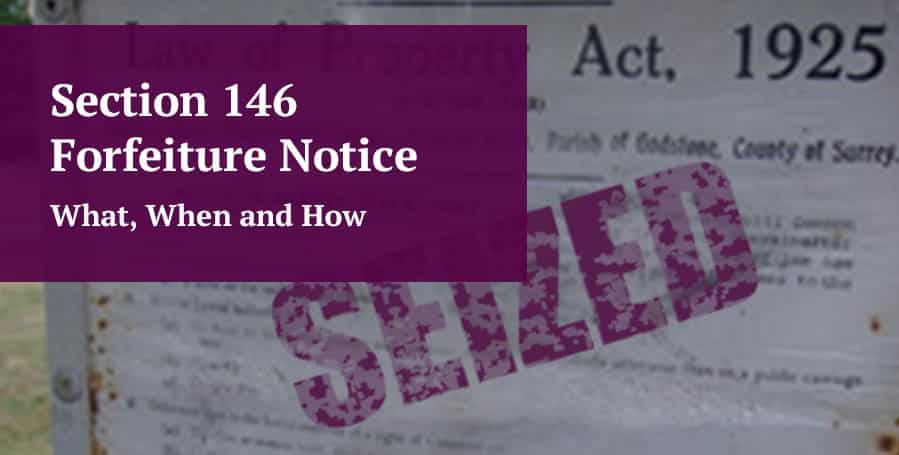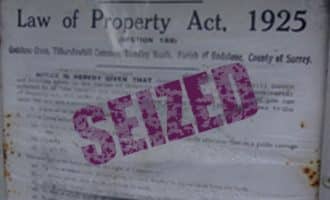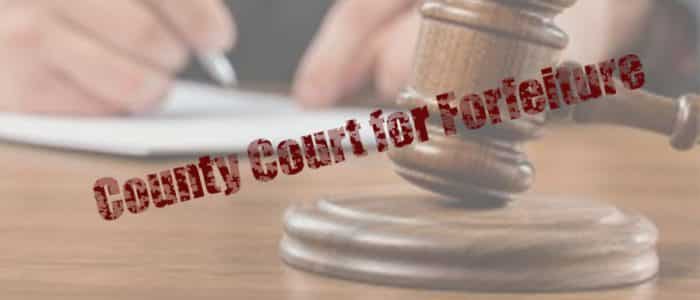Section 146 Forfeiture Notice – What, When and How
David Cammack

What is Forfeiture?
Forfeiture is effectively the granting back to the landlord of the right to re-enter and take back possession of the property.
For forfeiture to take place, the landlord has to issue the notice in order to conform with the requirements of the Law of Property Act 1925.
A landlord cannot just take back possession because the lease has been breached; he must follow the required procedure. This is because section 2 of the Protection From Eviction Act 1977 states that it is not lawful to forfeit a lease without going through the Court.
This section 146 procedure applies to both:
- commercial leases; and
- residential ‘long’ leases (i.e. a flat or house with a lease longer than 21 years, usually being one where a large premium was paid originally to buy the long lease for, typically, 125 years, where rent is not paid annually, a small amount of ground rent is paid annually and possibly a service charge too).
What is the Section 146 Forfeiture Notice?
It is a notice served under section 146 of the Law of Property Act 1925 by a landlord to their tenant to terminate a
It is only possible to issue such a notice if there is a right to forfeit the lease (a right of re-entry) written into the lease. The notice confirms that forfeiture proceedings (to terminate the lease) will be brought because a covenant (a contractual promise) in the lease has been breached unless the breach is remedied (assuming the breach is capable of being remedied).
The types of covenant that are commonly breached include the following covenants:
- to pay rent (usually more relevant only to commercial leases);
- to maintain and repair the property; or
- not to keep pets at the property; or
- not to sub-let the property (without the landlord’s permission).
Dilapidations that the tenant has not repaired make up a substantial amount of 146 notice matters.
NB For residential long leases the landlord does not need to follow the section 146 process in order to forfeit the lease if there has been a failure to pay the ground rent. In such a case, the section 146 notice is not needed, and the landlord can move directly to issuing proceedings in the County Court to repossess the property.
To comply with section 146(1)(a) of the Law of Property Act, the notice must state the breach complained of. Ideally you will set out how the breach has occurred and you can do this in the body of the notice itself or you can add a schedule to the notice. See the section headed “S146 and Prescribed Information” below for fuller details on what the notice must contain.
For example, if you are issuing the notice because of a dilapidations claim (possibly you observed during an inspection of the property that the property had not been appropriately maintained), then you would add a schedule of dilapidations as a schedule to the notice.
When to Serve the Section 146 Forfeiture Notice
The landlord cannot serve the notice if the lease has been breached for non-payment of the rent, service charges or administration charges unless the amount owed either (a) is over £350 or (b) includes part that has been unpaid for 3 years.

These set out additional conditions that must be fulfilled before a landlord can exercise his right to forfeit in these circumstances.
In general this means that the unpaid charge or breach of covenant:
- has been agreed or admitted by the tenant;
- has been determined by a Court order (and in such a case the landlord must wait another 14 days after the decision before serving the forfeiture notice under section 146, to see that it is not being appealed), or
- in the case of a breach of a covenant (other than in relation to the payment of service charge or an administration charge), it has been “finally determined” by the First-tier Tribunal (Property Chamber), i.e. its decision is not being appealed.
For more on forfeiture after a decision of the First-tier Tribunal (Property Chamber), see this article.
The lease itself must have set out something that the tenant can or cannot do (the covenant) and that must have been breached in order to entitle the landlord to issue the notice. The lease must also contain a clause that gives the landlord the right to forfeiture in the event that a covenant in the lease is breached.
Assuming that the lease contains the right to forfeiture, then the landlord should issue the notice as soon as they become aware of the breach. See the note on “Avoiding Waiver” below.
S146 and Prescribed Information
The notice must contain certain prescribed information. It must include:
- Details of what the breach is;
- If the breach can be fixed, a request to fix the breach in order to avoid the proceedings; and
- Details of the monetary compensation required, if applicable.
- In the case of unpaid charges, the notice under section 146 must state that section 81 of the Housing Act 1996 applies and set out the effect of subsection 81(1) – see above.
The landlord must give the tenant reasonable time to fix the breach. This will be what is reasonable in the circumstances, dependant on what the breach is. Most breaches will be capable of being remedied (for example a dilapidations breach). However some, such as a breach through assigning the lease, will not.
If the breach is capable of remedy and you do not give the tenant a reasonable opportunity to fix the breach, then the notice will be void in accordance with section 146(1)(b) of the Law of Property Act.
Under the Law of Property Act you are entitled to monetary compensation for the breach. The monetary compensation required must also be reasonable and could include, for example, surveyors’ fees.
If you do not claim monetary compensation in the notice, then the notice is still valid, but you cannot later claim damages for the breach complained of.
After the Notice

If the tenant does not fix the breach within a reasonable time, then the landlord can commence proceedings in the County Court for forfeiture. This is the next step and there is no other form you can serve at that point to end the lease – you have to go through the Court process.
In response to these Court proceedings, the tenant (or their mortgagee) has the right to apply to the Court for relief against the order being sought, in accordance with section 146(2) of the Law of Property Act 1925.
If such an application is made, the tenant or their mortgagee will need to justify to the Court why the breach has not been remedied to date and when and how it will be (assuming that the breach is capable of remedy).
If the lease is forfeited, the landlord can still bring a separate money claim (typically in the County Court) for any unpaid rent, etc. (Again, this is more relevant to commercial leases.) For commercial rent arrears, there is now a separate procedure for this called CRAR (commercial rent arrears recovery). We have an article on our blog about it here.
Avoiding Waiver

A landlord looking to take back possession of a property for an unremedied breach of the lease terms must be careful to avoid providing the tenant with the ability to argue ‘waiver’. Waiver occurs where a landlord becomes aware of a breach of the lease, but (a) fails to take action against the tenant within a reasonable period of time, or (b) acknowledges the continuance of the lease by, for example, accepting rent payments or demanding rent or service charges.
A landlord that becomes aware of a breach should ideally raise the issue in writing immediately with the tenant. If the tenant does not fix the breach within the time set out, then the section 146 notice should be issued without delay.
As you can see, this is technical area of the law, there is a lot at stake and we advise you to employ a Solicitor to assist you with this.
If you are a landlord you may find our other guides for landlords useful.
This guide is provided “as is”, without warranty or condition of any kind. Legalo disclaims all warranties and conditions with regard to this guide. This guide is not a substitute for the legal advice of a solicitor. This guide was up-to-date when published but is not guaranteed to remain up-to-date at all times, since the law can change rapidly at times.
© Legalo Ltd 2017; updated in 2022
Get Legal & Compliance tips straight to your inbox, free!
"*" indicates required fields
